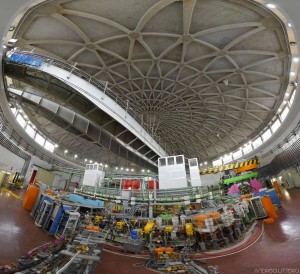INFN and particularly the Frascati National Laboratories have been and continue to be involved in the development of new accelerators.
At the Frascati National Laboratories, starting from the mid-50s with the construction of an electron synchrotron, Italian skills of accelerator physics were concentrated and in 1960, with the construction of the ADA storage ring, one of the milestones in the history of sub-nuclear physics was laid, marking the beginning of a new research phase that has been and remains one of the most fruitful in expanding and consolidating our knowledge of the ultimate structures of nature: research based on the impact of matter and antimatter. ADONE in the 70s and DAΦNE, currently in operation at LNF, represent what has been called “Italian road to sub-nuclear physics”.
Synchrotron light, as the electromagnetic radiation emitted by the electron beams orbiting in a storage ring is called, is currently one of the most valuable research tools in vast areas of physics, chemistry, biology and in the field of the most advanced technological applications. Research with synchrotron radiation is by nature a focal point of the encounter between fundamental research and the industrial and production world, essential for ensuring technological innovation.
In fact, particle accelerators are “at work” in hospitals, industry and among those involved with the cultural heritage, and reach various sectors, from electronics to the study of the structure of proteins and the development of innovative materials. There are more than 15,000 accelerators in the world, but in research labs there are just a hundred or so!
DISCOVER THE ACCELERATORS IN FRASCATI
 INFN-LNF Laboratori Nazionali di Frascati
INFN-LNF Laboratori Nazionali di Frascati
